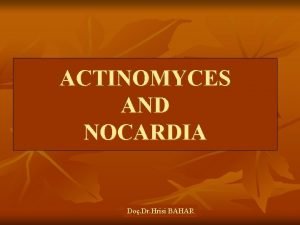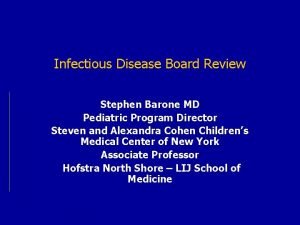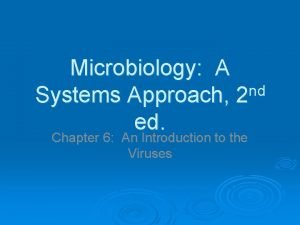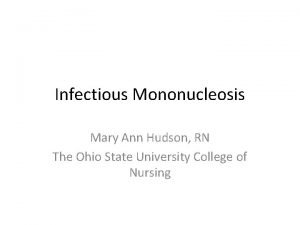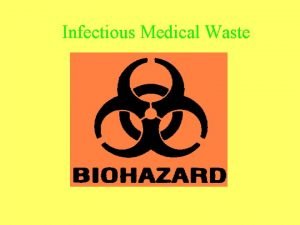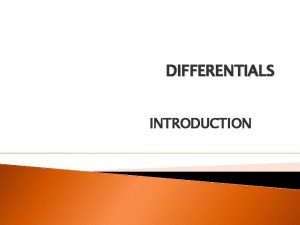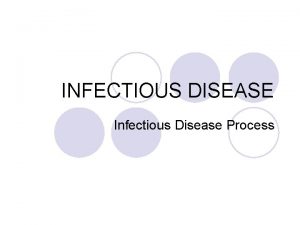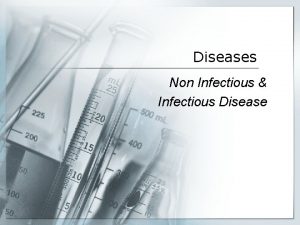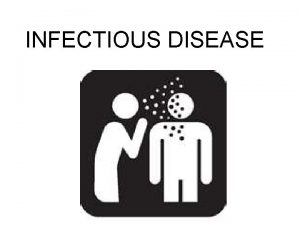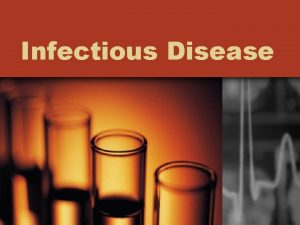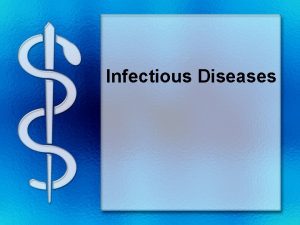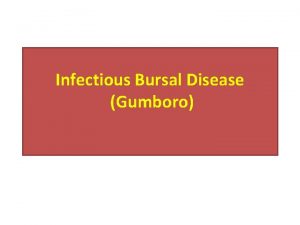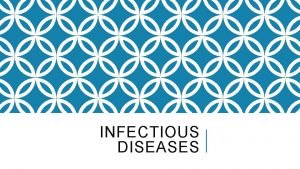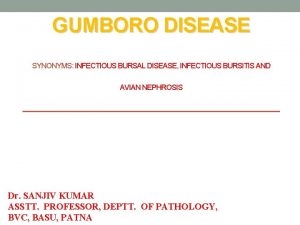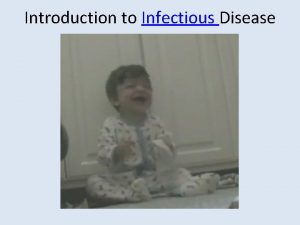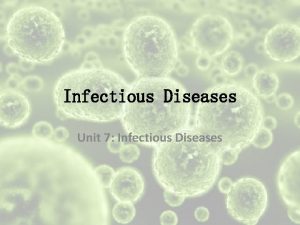Infectious Disease WHAT IS AN INFECTIOUS DISEASE n




















- Slides: 20

Infectious Disease


WHAT IS AN INFECTIOUS DISEASE?

n Bacteria, viruses, protozoans, fungi, and other parasites called pathogens are capable of causing a change that disrupts the homeostasis in the body.

n Any disease caused by the presence of pathogens in the body is called an infectious disease. The main sources of pathogens are soil, contaminated water, and infected animals, including other people

n Not all microorganisms are pathogenic; your body is host to billions of microorganisms, most of which are bacteria. These microorganisms have a symbiotic relationship with your body helping to keep harmful bacteria and other microorganisms from growing.


n If beneficial organisms are eliminated from your body, pathogens can establish themselves and cause infectious disease. In addition, if beneficial organisms enter areas of the body where they are not normally found, these formerly harmless organisms can become potential pathogens

Disease Cause Affected Organ Transmission Smallpox Virus Skin Droplet Influenza Virus Respiratory system Direct contact HIV/AIDS Virus Immune system Body Fluid Hepatitis B Virus Liver Body Fluid Tetanus Bacteria Nervous system Puncture Wound Strep Throat Bacteria Respiratory system Droplet Tuberculosis Bacteria Respiratory Droplet




RESERVOIRS OF PATHOGENS

n Main source of human disease pathogens is the human body, these people may or may not display symptoms of the illness. These carriers are a significant reservoir of infectious disease.

n Other people may communicate the disease before they experience symptoms. Animals are the other main reservoir for pathogens, making the eradication of certain pathogens almost impossible.


TRANSMISSION OF DISEASE

n 1. 2. 3. 4. Pathogens can be transmitted to a host from a reservoir four main ways; By direct contact; exchange of body fluid especially during sexual intercourse By an object; people handle contaminate objects then touch face, nose, eyes, etc… Through the air; person coughs or sneezes spreading droplets which are then inhaled By a vector; insects such as mosquitos, ticks spread pathogens between hosts or reservoirs


 Stages of infection
Stages of infection Infectious disease
Infectious disease Chapter 26 infectious disease prevention and control
Chapter 26 infectious disease prevention and control Hennepin county infectious disease manual
Hennepin county infectious disease manual Stages of infectious disease
Stages of infectious disease Viruses are the smallest infectious agents
Viruses are the smallest infectious agents Infectious disease quality controls
Infectious disease quality controls Stridor
Stridor Bharathi viswanathan
Bharathi viswanathan Noncellular infectious protein particles are called
Noncellular infectious protein particles are called Papillomitosis
Papillomitosis Infectious mononucleosis
Infectious mononucleosis Infectious stunting syndrome
Infectious stunting syndrome Infectious waste in hiligaynon
Infectious waste in hiligaynon Infectious nucleic acid
Infectious nucleic acid Epidemiological triad
Epidemiological triad Infectious canine hepatitis in dogs
Infectious canine hepatitis in dogs Infectious mononucleosis
Infectious mononucleosis Household safety symbols
Household safety symbols Certain infectious and parasitic diseases
Certain infectious and parasitic diseases The red death disease
The red death disease

